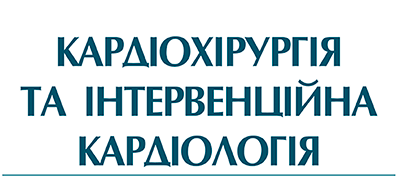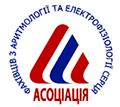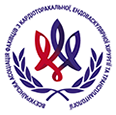Technologies of diagnosis and treatment
DOI: http://doi.org/10.31928/2305-3127-2020.4.3443
Immediate results of the еndovascular aneurysm repair in abdominal aortic aneurysm patients with an unfavorable proximal neck
S.M. Furkalo, V.A. Kondratyuk, O.A. Vlasenko, I.V. Khasyanova, A.V. Khohlov, P.A. Gindich, I.A. Mazanovich, O.O. Pustyntsev
O.O. Shalimov National Institute of Surgery and Transplantology of NAMS of Ukraine, Kyiv, Ukraine
More than half of the interventions for abdominal aortic aneurysm are performed using endovascular techniques. However, due to the anatomical characteristics of the aorta about 40 % of patients cannot be candidates for еndovascular aneurysm repair (EVAR). Anatomical features that are difficult or unacceptable for stent-graft placement include short or no proximal neck, angular, tapered neck, and vessel diameter that exceeds the existing capabilities of endoprostheses. In cases where traditional surgical correction is not an acceptable option, various technological methods and equipment are used. The observation included 16 consecutive patients with abdominal aortic aneurysm, where EVAR was performed. When analyzing the anatomical characteristics of the aneurysmal sac, 7 (43.7 %) patients were classified as patients with an unfavorable proximal neck of the aneurysm, the so-called «hostile neck». Two EVAR interventions were complex (2 patients with parallel grafts), which made it possible to achieve an increase in the proximal infrarenal zone implantation up to 16–20 mm, and adjuvant or additional endovascular procedures – in our case, implantation of Aptus Heli-FX endoancors in 5 patients. The comparison group consisted of 9 patients with standard aneurysm neck, where standard EVAR procedures were performed. The main anatomical difference in the groups was the length of the aneurysm neck – 9.9 mm and 36.1 mm in groups I and II, respectively (p = 0,0003). EVAR in the groups were carried out without significant complications or fatal cases; in the first group, the duration of the operation (p = 0.01), the amount of contrast (p = 0.03) and the fluoro time (p = 0.01) were significantly increased than in the 2nd group. The postoperative period did not differ between the groups.
Conclusions. The use of contemporary technologies allows to significantly expand the indications for EVAR in patients with unfavorable anatomy.
Key words: abdominal aortic aneurysm, еndovascular aneurysm repair.
| [PDF] | [References] |








